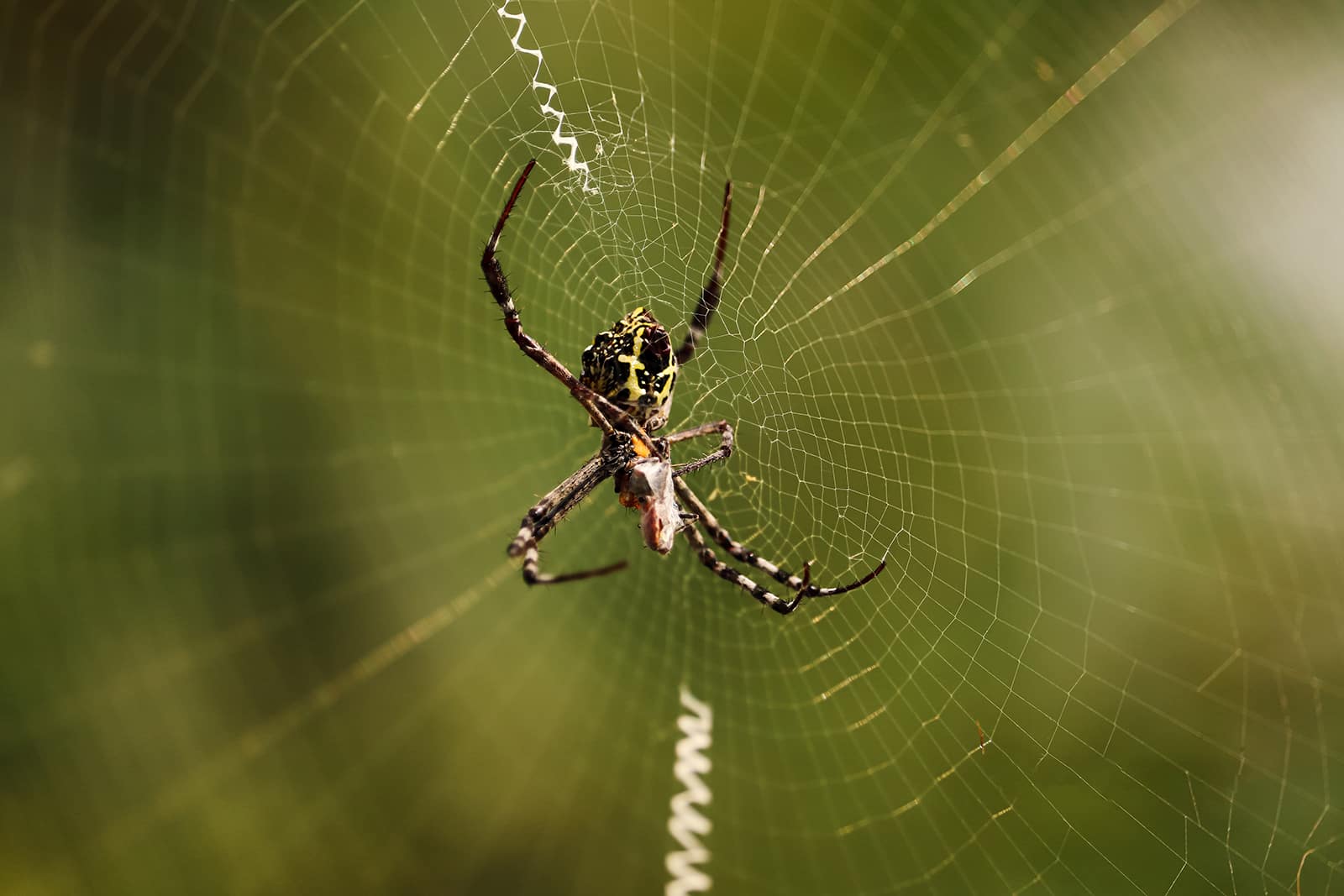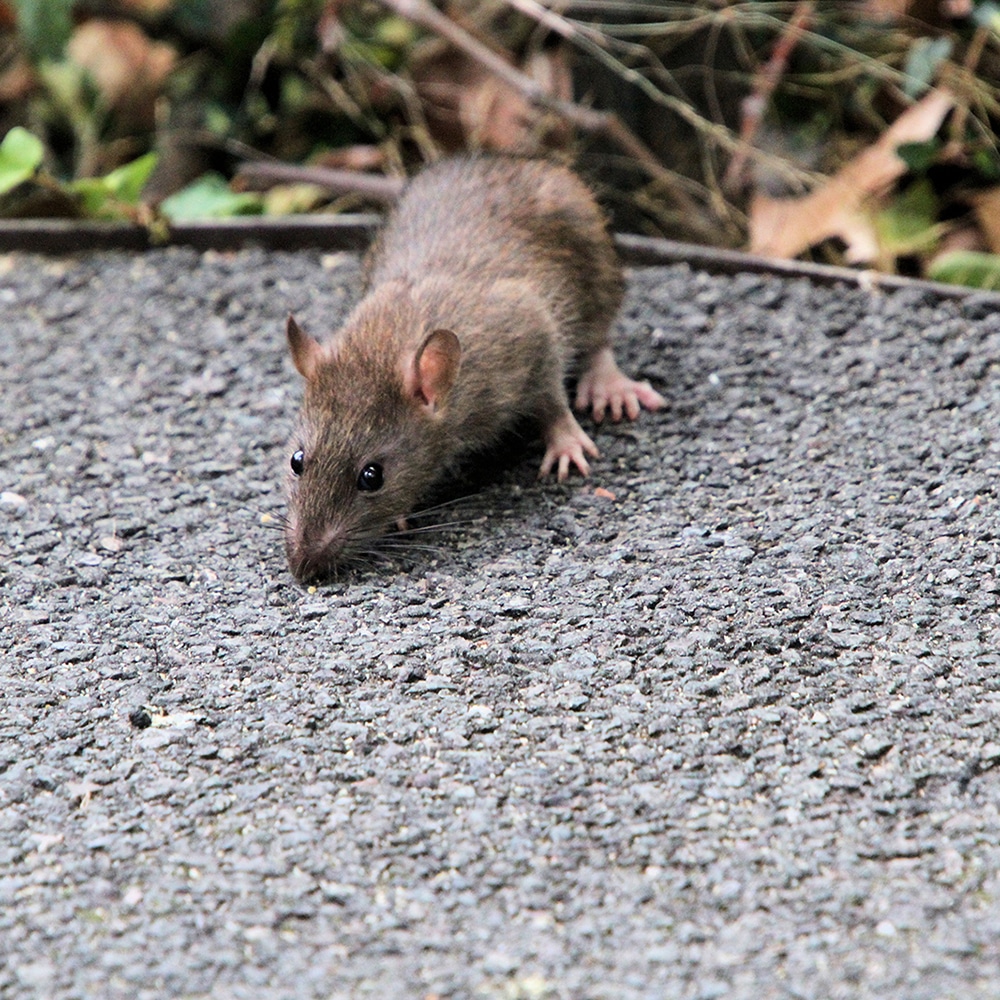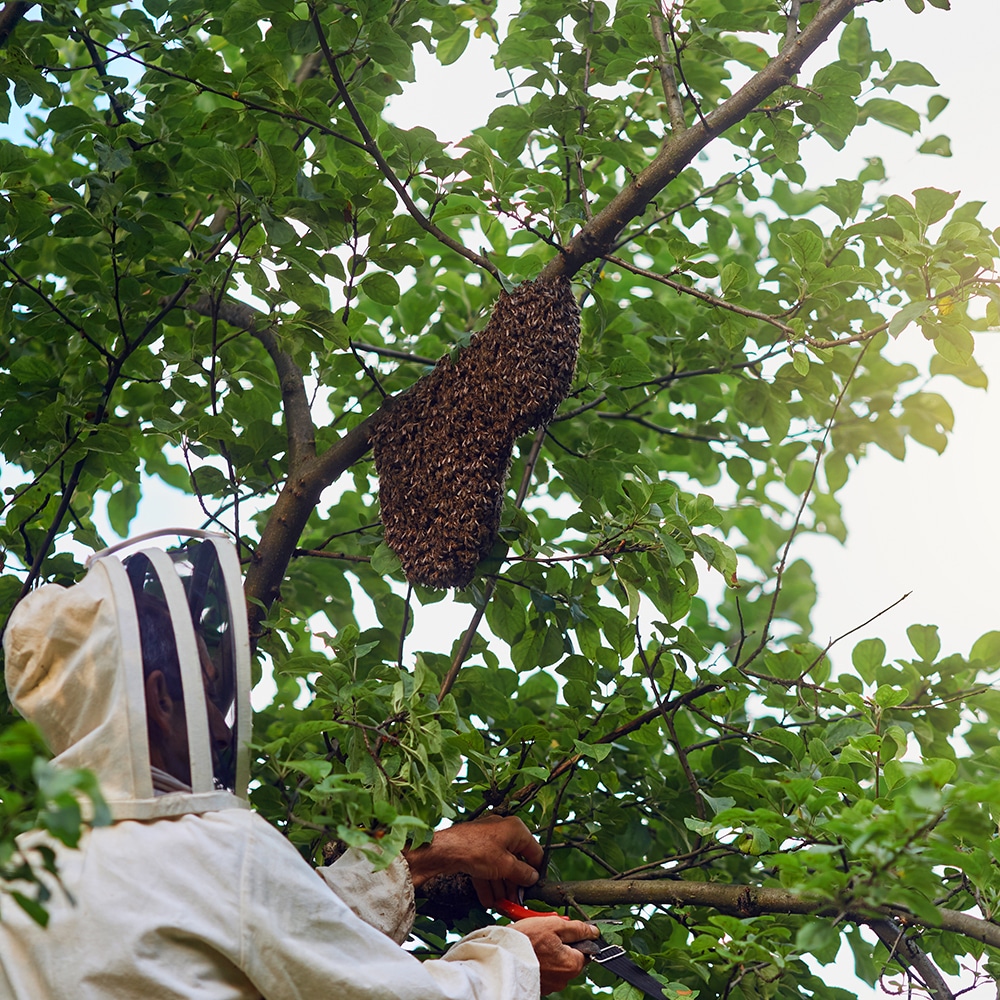
Why Do Spiders Come Back And Why
Why Do Spiders Come Back And Why On The Central Coast NSW. Responsive Proactive Solutions. Detail-focused for lasting results. Call Adam on 0431 222 894
Rodents and disease transmission pose significant health risks, especially in areas like Central Coast NSW. Understanding these risks helps in taking preventive actions. At Vital Pest Control, we focus on keeping your environment safe. Our team offers reliable and responsive solutions to rodent issues, prioritising quality over quantity. Learn more as we explore crucial aspects of rodent-related diseases.
Understanding Hantavirus Risk
Hantavirus can be fatal. It spreads through rodent droppings and urine. Proper handling and disposal are crucial. Always wear protective gear and avoid stirring up dust.
Salmonella Contamination Possibilities
Rodents can carry Salmonella bacteria, contaminating food and surfaces. Keep areas clean and store food securely to reduce risk. Regular inspections by professionals can help.
Rat Bite Fever Awareness
Rat bite fever spreads through bites or scratches from infected rodents. Seek immediate medical attention if bitten. Prevention involves effective rodent control and awareness.
Leptospirosis from Rodent Urine
Leptospirosis transmits through contact with rodent urine. It affects humans and pets. Ensure proper sanitation and consult experts for pest management.
Proper Handling of Droppings
Wear gloves and masks when cleaning droppings. Dispose of them in sealed bags. Do not vacuum or sweep, as this can spread pathogens.
Ventilation for Infested Areas
Ventilate areas before cleanup to reduce airborne particles. Open windows and use fans. This step is vital for safety and effective decontamination.
Safe Cleanup Protocols
Use disinfectant sprays on contaminated surfaces. Follow up with thorough cleaning. Avoid mixing cleaning agents, and always read labels for safety.
Disinfecting Surfaces Thoroughly
Wash surfaces with a bleach solution. Allow to air dry for maximum effect. Regular disinfection prevents disease transmission and keeps spaces hygienic.
Discover how we can help you today! Visit our Contact page for more information.

Understanding the risks associated with hantavirus is crucial for residents and businesses in Central Coast NSW. This virus, primarily spread by rodents, poses significant health threats, especially in areas where these pests are prevalent. Awareness and preventive measures can help mitigate the risks of infection, safeguarding communities and properties.
Transmission and Symptoms
Hantavirus is transmitted to humans through contact with the droppings, urine, or saliva of infected rodents. Inhaling dust contaminated with rodent excreta is a common transmission route. Once infected, individuals may experience flu-like symptoms, including fever, muscle aches, and fatigue, potentially progressing to severe respiratory issues. Early detection and treatment are vital, highlighting the importance of understanding these risks.
Prevention Strategies
Implementing effective rodent control measures is key to preventing hantavirus. Sealing entry points, maintaining clean environments, and reducing food sources deter rodents from inhabiting your premises. Regular inspections by pest control professionals ensure early detection and intervention, reducing the risk of exposure to hantavirus. Choosing a trusted service like Vital Pest Control can make a significant difference in maintaining a safe and rodent-free environment.
Community Awareness
Raising awareness about hantavirus and its transmission methods is essential for community safety. Educational initiatives and informative resources empower individuals and businesses to take proactive steps in rodent management. A well-informed community is better equipped to address potential rodent infestations and protect against the health hazards posed by hantavirus.
Salmonella contamination is a real concern on the Central Coast, NSW, especially when considering the role of rodents in disease transmission. Vital Pest Control highlights the dangers rodents pose, as they are notorious carriers of this bacteria. Understanding how these pests spread Salmonella is crucial for maintaining a safe and healthy environment.
Pathways of Contamination
Rodents, particularly rats and mice, often infiltrate homes and businesses searching for food. They contaminate surfaces by leaving droppings and urine, which can carry Salmonella. This bacteria easily transfers to food preparation areas, posing a risk of infection to humans. Regular cleaning and pest control are essential to mitigate this risk.
Prevention Strategies
Preventing Salmonella contamination starts with effective pest control measures. Sealing entry points and maintaining clean environments discourage rodent infestations. Vital Pest Control offers tailored solutions to keep these pests at bay. Additionally, storing food properly and disposing of waste promptly reduces attraction to rodents.
Health Implications
Salmonella infection can lead to severe illness, particularly in vulnerable individuals like the elderly and young children. Symptoms include nausea, vomiting, and abdominal cramps. Early intervention and professional pest control services can prevent outbreaks and safeguard community health.
Rat bite fever is a significant concern for residents on the Central Coast, NSW. This bacterial infection, often transmitted through rodent bites, scratches, or contact with rodent waste, poses serious health risks. Awareness and prevention are key, especially in areas prone to rodent infestations. Understanding how this disease spreads and its symptoms can help in taking effective measures to protect oneself and loved ones.
Understanding Rat Bite Fever
Rat bite fever is caused by bacteria found in rodents, particularly rats. In Australia, Streptobacillus moniliformis is the primary culprit. Humans can contract the disease not only through direct bites but also through handling infected rodents or consuming food and water contaminated by them. The disease is not limited to bites, making it imperative to maintain hygiene when dealing with potential rodent exposure.
Recognising Symptoms
Symptoms of rat bite fever can appear within three to ten days of exposure. These may include fever, vomiting, rash, muscle pain, and headaches. If untreated, the disease can lead to complications such as pneumonia, meningitis, or endocarditis. Early diagnosis and treatment are crucial to prevent severe health issues. Consulting a health professional if symptoms arise after rodent exposure is vital.
Prevention Tips
Preventing rat bite fever begins with effective rodent control. Keeping homes free of food debris, sealing entry points, and using traps can reduce rodent presence. Professional pest control services offer comprehensive solutions, ensuring safety and peace of mind. Regular inspections and prompt action against infestations are recommended to minimise the risk of disease transmission.
Leptospirosis is a significant health threat, especially on the Central Coast of NSW, where rodents are prevalent. This bacterial infection, often spread through rodent urine, poses risks to both humans and animals. Rodents, including rats and mice, can carry the Leptospira bacteria, which thrives in warm and wet environments. Understanding how leptospirosis spreads and its potential impact is crucial for effective pest control.
Transmission and Environment
Leptospirosis spreads primarily through contact with water or soil contaminated by infected rodent urine. Rodents often inhabit areas close to human activity, increasing the risk of transmission. The bacteria can survive in moisture-rich environments, making it particularly troublesome during rainy seasons. People involved in outdoor activities or those with pets are at a higher risk of exposure.
Health Implications
For humans, leptospirosis can cause flu-like symptoms, including fever and muscle pain. In severe cases, it may lead to liver or kidney damage. For pets, symptoms can range from mild to fatal. Early detection and treatment are vital to managing the disease effectively. Awareness of symptoms and prompt medical attention can mitigate severe outcomes.
Preventative Measures
Preventing leptospirosis involves reducing rodent populations and limiting exposure to contaminated environments. Regular pest control measures, such as sealing entry points and maintaining clean surroundings, are essential. Vital Pest Control offers expert services to help manage rodent infestations, ensuring a safer environment on the Central Coast.
Rodents are notorious for spreading disease, particularly through their droppings. On the Central Coast NSW, proper handling of these droppings is crucial for maintaining a safe and healthy environment. By following best practices, you can significantly reduce the risk of disease transmission and ensure the effectiveness of pest control efforts.
Identifying Rodent Droppings
Recognising rodent droppings is the first step in handling them properly. Typically small and dark, these droppings resemble grains of rice. Their presence indicates active rodent activity and highlights the need for immediate attention. Prompt identification can guide appropriate cleanup measures, vital for preventing the spread of harmful bacteria and viruses.
Safe Removal Techniques
When dealing with rodent droppings, prioritise safety. Always wear gloves and a mask to avoid direct contact and inhalation of airborne particles. Use a damp paper towel to pick up droppings, preventing dust from spreading. Dispose of them in a sealed plastic bag, ensuring they are contained and cannot pose further risks.
Disinfecting Affected Areas
After removing droppings, thoroughly disinfect the area. A bleach solution or commercial disinfectant effectively eliminates lingering pathogens. Apply the solution generously, allowing it to sit for several minutes before wiping clean. This step ensures that any residual bacteria or viruses are neutralised.
Preventing Future Infestations
To minimise future rodent issues, secure food sources and seal potential entry points. Regularly inspect your property for signs of rodents and address any vulnerabilities. Consistent monitoring and maintenance are key to preventing infestations and reducing the risk of disease transmission on the Central Coast.
Effective ventilation plays a crucial role in managing rodent infestations, especially on the Central Coast of NSW. Proper airflow helps mitigate the health risks associated with rodent-borne diseases by reducing moisture and odours, creating a less inviting environment for pests. Incorporating ventilation solutions can significantly enhance pest control efforts, making spaces healthier and more comfortable.
Importance of Ventilation in Infested Areas
Ventilation is vital in any space, but it becomes even more critical in areas prone to rodent infestations. Poor ventilation can lead to damp conditions, which attract rodents seeking shelter. By improving airflow, you can help prevent these pests from settling in. Adequate ventilation also helps disperse airborne pathogens, reducing the risk of disease transmission.
Choosing the Right Ventilation Solutions
Selecting the proper ventilation system is essential for effectively managing infested areas. Options like exhaust fans, attic vents, and crawl space vents can make a significant difference in reducing humidity levels. These solutions help keep spaces dry and less appealing for rodents. Consulting with a pest control expert ensures you choose the most effective methods tailored to your specific needs.
Integrating Ventilation with Pest Control Strategies
Combining ventilation with pest control measures maximises results. Regular maintenance of vents and air systems should complement trapping and baiting techniques. This integrated approach enhances the overall effectiveness of managing rodent populations. Emphasising ventilation as part of a comprehensive pest control plan can lead to long-term success in protecting homes and businesses from health risks.
Rodents on the Central Coast NSW can be more than just a nuisance, posing significant health risks due to their ability to transmit diseases. Proper cleanup protocols are essential in ensuring these pests do not compromise the safety of your home or business. Effective pest control requires not only removing rodents but also cleaning contaminated areas safely.
Identifying Contaminated Areas
Begin by thoroughly inspecting your premises to identify areas where rodents have been active. Look for droppings, gnawed materials, and nesting sites. These spots are crucial to target during cleanup as they are the most likely sources of disease-causing pathogens. Ensuring no area is overlooked is vital for a comprehensive clean.
Using Appropriate Cleaning Agents
Choosing the right cleaning agents is crucial for effective disinfection. Use products that are specifically designed to kill bacteria and viruses associated with rodent infestations. Avoid using vacuum cleaners or dry sweeping as these can disperse harmful particles into the air. Instead, use damp cleaning methods to minimise airborne risks.
Ensuring Personal Safety
Personal safety during cleanup cannot be overstated. Wear gloves and masks to protect against direct contact with contaminants. Dispose of any materials used during the cleanup process in sealed bags. This precaution helps prevent accidental exposure to harmful pathogens and ensures a safer environment post-cleanup.
Adopting these safe cleanup protocols not only addresses the immediate issue of rodent infestations but also contributes to long-term health safety on the Central Coast NSW.
Disinfecting surfaces thoroughly is crucial in tackling rodent-related issues, especially on the Central Coast of NSW. Rodents, notorious for spreading diseases, can leave harmful pathogens on surfaces they contact. Ensuring these surfaces are properly disinfected can significantly reduce the risk of disease transmission, protecting both households and businesses from potential health threats.
Choosing the Right Disinfectant
Selecting an effective disinfectant is the first step in combating germs left by rodents. Look for products specifically designed to kill bacteria and viruses. It’s essential to focus on disinfectants that are proven to work on hard, non-porous surfaces, ensuring that they can penetrate and kill germs effectively. Always read labels and follow instructions to maximise the disinfectant’s efficacy.
Proper Application Techniques
The technique used in applying disinfectants can impact their effectiveness. Begin by cleaning the surface to remove dirt and debris. This step allows the disinfectant to work more efficiently. Apply the disinfectant generously, ensuring the entire surface is covered. Allow it to sit for the recommended time to kill any pathogens thoroughly. Wiping too soon can reduce the effectiveness of the process.
Regular Disinfection Routines
Establishing a regular disinfection routine is vital for ongoing protection. High-touch areas like countertops, light switches, and doorknobs should be disinfected frequently. For businesses, implementing a cleaning schedule can help maintain a hygienic environment, reducing the risk of disease transmission. Consistency is key in keeping spaces safe from rodent-related diseases.
On the Central Coast of NSW, rodents can pose a significant threat, not just to property but also to health. Effective pest control is crucial, and using personal protective equipment (PPE) like masks and gloves plays a vital role in safeguarding against disease transmission during pest control activities.
Importance of Masks
Masks serve as a primary defence against airborne particles, which commonly carry diseases from rodents. When dealing with pest infestations, masks help prevent inhalation of harmful pathogens that rodents often spread through droppings and urine. A well-fitted mask ensures that pest control professionals are protected from these airborne dangers, maintaining their health while conducting necessary eradication procedures.
Role of Gloves
Gloves provide essential protection during pest control tasks by reducing direct contact with rodents and their habitats. Handling traps, cleaning infested areas, or disposing of rodent waste without gloves increases the risk of disease transmission. Wearing gloves acts as a barrier, ensuring that any potential pathogens do not come into contact with skin, thereby safeguarding workers from infections.
Ensuring Safety
Utilising PPE like masks and gloves in pest control is not just about personal safety but also about maintaining a healthy environment on the Central Coast. By adopting these protective measures, pest control experts can effectively manage rodent populations while minimising health risks, ensuring both residential and commercial spaces remain safe and disease-free.
Rodents can wreak havoc on homes and businesses, especially on the Central Coast of NSW. These pests not only cause structural damage but also pose health risks by transmitting diseases. Sealing entry points is a crucial step in rodent control, ensuring that these unwanted guests are kept out.
Identifying Common Entry Points
Rodents are adept at finding entryways into buildings. Common entry points include gaps around doors and windows, holes in walls, and openings where utilities enter the premises. A thorough inspection helps identify these vulnerabilities. Look for signs like gnaw marks or droppings, which can indicate active rodent paths.
Using Effective Materials
Once entry points are identified, using the right materials is vital. Steel wool, wire mesh, and caulk are effective in sealing small gaps. For larger openings, consider using sheet metal or concrete. These materials are not only durable but also difficult for rodents to chew through, providing a long-term solution.
Maintaining a Rodent-Free Environment
Regular maintenance ensures entry points remain sealed. Weather changes and building wear can create new gaps, so periodic inspections are essential. Additionally, keeping the surrounding area clean and free of debris reduces attraction. A proactive approach in monitoring and maintaining barriers helps sustain a rodent-free environment.
Rodents pose a significant threat to food safety, particularly on the Central Coast of NSW. Their ability to spread disease makes it crucial to store food properly to protect both health and property. Implementing effective strategies for keeping rodents away can dramatically reduce the risk of contamination.
Secure Storage Solutions
Invest in airtight containers to store dry goods like grains, cereals, and pet food. These containers should be made from durable materials, such as metal or heavy-duty plastic, to prevent rodents from gnawing through. Keep these containers off the floor and away from walls, as rodents often scurry along baseboards searching for entry points.
Organise and Declutter
Maintain a tidy pantry by eliminating clutter that can serve as a hiding spot for rodents. Regularly rotate stock and check expiration dates to prevent food from becoming forgotten and attracting pests. Consider using shelving units that are easy to clean and inspect, ensuring quick identification of any rodent activity.
Seal Entry Points
Identify and seal any gaps or holes in your property where rodents might enter. Pay particular attention to spaces around pipes, vents, and doors. Use steel wool or metal mesh to fill any holes, as these materials are challenging for rodents to chew through.
Rodents pose significant health risks, making it crucial for families on the Central Coast NSW to understand the hazards. Educating your family about these risks can help prevent disease and maintain a healthy home environment. Vital Pest Control is committed to providing essential information to safeguard your loved ones.
Understanding Rodent-Borne Diseases
Rodents can carry a range of diseases that easily transmit to humans. These include leptospirosis, hantavirus, and salmonella. Each disease presents unique symptoms and potential complications. By recognising the signs of these illnesses, your family can seek prompt medical attention if necessary. Knowledge of these diseases also highlights the importance of preventative measures in your home.
Identifying Signs of Infestation
Early detection of a rodent presence can prevent the spread of disease. Teach your family to spot droppings, gnaw marks, and nests. Unusual odours or scampering noises can also indicate an infestation. Quick identification allows for swift action, reducing the risk to your family’s health. Regularly inspecting your home can make a significant difference.
Implementing Preventative Measures
Education alone is not enough; implementing preventative measures is key. Encourage your family to store food in sealed containers and dispose of waste properly. Sealing entry points around your home can prevent rodents from entering. Promoting cleanliness, especially in kitchens and storage areas, further reduces attraction. These actions create a less hospitable environment for rodents.
Monitoring pet water bowls for contamination is crucial, especially when considering the link between rodents and disease transmission. On the Central Coast NSW, where pest control is vital, ensuring your pets’ water is clean can prevent potential health risks.
Understanding Contamination Risks
Rodents like rats and mice are notorious for spreading diseases through their droppings and urine. These pests can easily access pet water bowls, introducing harmful bacteria and viruses. Regularly checking and cleaning these bowls can help minimise the risk of contamination and keep your pets healthy.
Cleaning Practices
Regular cleaning is essential to prevent contamination. Use hot, soapy water to wash your pet’s bowl daily. This simple step removes any pathogens left by rodents or other pests. Additionally, consider placing bowls in areas less accessible to rodents, further reducing the risk of exposure.
Choosing the Right Location
Placing water bowls in locations less prone to rodent activity can significantly reduce contamination chances. Avoid areas near potential entry points such as open doors or windows. Instead, keep bowls in elevated areas or indoors, where it’s harder for rodents to reach.
Monitoring for Signs of Infestation
Be vigilant for signs of rodent infestation around your home, such as droppings or chewed materials. Early detection can help you take prompt action, reducing the opportunity for rodents to contaminate water sources.
Fleas play a crucial role in the ecosystem, particularly when it comes to rodents on the Central Coast NSW. Their presence impacts both the health of rodent populations and the transmission of diseases. Understanding this relationship is essential for effective pest control strategies in the area.
Flea Infestations in Rodent Colonies
Rodents often host fleas, which thrive in their dense colonies. These fleas rely on rodents for sustenance and shelter. When rodent populations surge, so do flea numbers, leading to significant infestations. These pests can spread rapidly, complicating pest control efforts and increasing health risks for humans and pets nearby.
Role in Disease Transmission
Fleas on rodents are notorious vectors for diseases like the bubonic plague and murine typhus. As fleas bite infected rodents, they become carriers, capable of transmitting illnesses to other animals and humans. This cycle underscores the importance of managing both fleas and rodents to minimise disease spread in the Central Coast region.
Effective Pest Control Measures
Managing flea and rodent populations requires a comprehensive approach. Pest control services on the Central Coast focus on reducing rodent habitats, eliminating flea infestations, and monitoring for potential outbreaks. This integrated strategy ensures a healthier environment, safeguarding both public health and property.
Proper disposal of rodent carcasses is crucial for controlling pests on the Central Coast, NSW. When rodents die, they can still transmit diseases, making safe disposal a key step in pest management. Understanding the risks and methods involved ensures a healthier environment, reducing the chance of disease transmission.
Understanding Decomposition Risks
Rodent carcasses left to decompose can attract other pests, leading to secondary infestations. Flies, for instance, are drawn to decaying bodies, potentially spreading bacteria. By promptly removing carcasses, you minimise these risks, maintaining a safer home environment.
Safe Handling Practices
When dealing with rodent carcasses, it’s vital to wear protective gear such as gloves and masks. This prevents direct contact with pathogens. After handling, wash hands thoroughly with soap and water. These practices reduce the risk of disease exposure, safeguarding your health.
Effective Disposal Methods
Disposing of rodent carcasses properly involves sealing them in sturdy plastic bags before placing them in the bin. This prevents odour and deters scavengers. For large infestations, consider contacting professional pest control services on the Central Coast, NSW. They can ensure disposal is handled safely and efficiently, offering peace of mind.
Please leave your details in the form and we will call you back the same day.
So that we can process your enquire efficiently please leave as many details as possible and upload any relevant images. (.jpg and .png format)

Why Do Spiders Come Back And Why On The Central Coast NSW. Responsive Proactive Solutions. Detail-focused for lasting results. Call Adam on 0431 222 894

Building a Long Term Residential Pest Protection Plan For Home Owners On The Central Coast NSW. Responsive Proactive Solutions. Detail-focused for lasting results. Call Adam on 0431 222 894

How to Protect Your Home from Wasp Infestations On The Central Coast NSW. Responsive Proactive Solutions. Detail-focused for lasting results. Call Adam on 0431 222 894